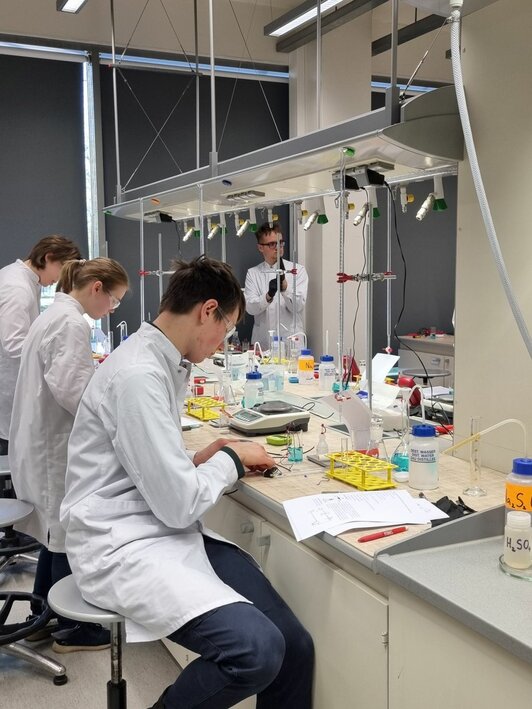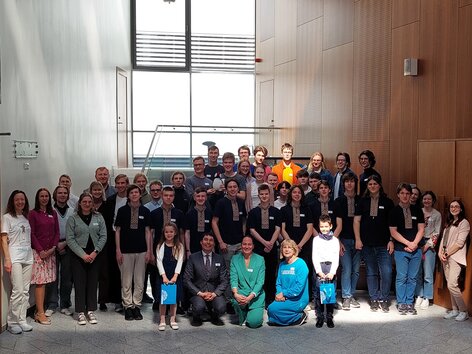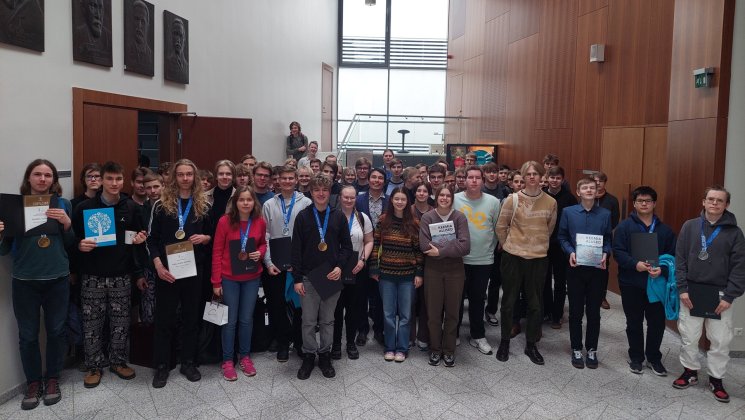-
Faculty of Arts and HumanitiesDean's Office, Faculty of Arts and HumanitiesJakobi 2, r 116-121 51005 Tartu linn, Tartu linn, Tartumaa EST0Institute of History and ArchaeologyJakobi 2 51005 Tartu linn, Tartu linn, Tartumaa EST0Institute of Estonian and General LinguisticsJakobi 2, IV korrus 51005 Tartu linn, Tartu linn, Tartumaa EST0Institute of Philosophy and SemioticsJakobi 2, III korrus, ruumid 302-337 51005 Tartu linn, Tartu linn, Tartumaa EST0Institute of Cultural ResearchÜlikooli 16 51003 Tartu linn, Tartu linn, Tartumaa EST0Institute of Foreign Languages and CulturesLossi 3 51003 Tartu linn, Tartu linn, Tartumaa EST0School of Theology and Religious StudiesÜlikooli 18 50090 Tartu linn, Tartu linn, Tartumaa EST0Viljandi Culture AcademyPosti 1 71004 Viljandi linn, Viljandimaa EST0Professors emeriti, Faculty of Arts and Humanities0Associate Professors emeriti, Faculty of Arts and Humanities0Faculty of Social SciencesDean's Office, Faculty of Social SciencesLossi 36 51003 Tartu linn, Tartu linn, Tartumaa EST0Institute of EducationJakobi 5 51005 Tartu linn, Tartu linn, Tartumaa EST0Johan Skytte Institute of Political StudiesLossi 36, ruum 301 51003 Tartu linn, Tartu linn, Tartumaa EST0School of Economics and Business AdministrationNarva mnt 18 51009 Tartu linn, Tartu linn, Tartumaa EST0Institute of PsychologyNäituse 2 50409 Tartu linn, Tartu linn, Tartumaa EST0School of LawNäituse 20 - 324 50409 Tartu linn, Tartu linn, Tartumaa EST0Institute of Social StudiesLossi 36 51003 Tartu linn, Tartu linn, Tartumaa EST0Narva CollegeRaekoja plats 2 20307 Narva linn, Ida-Virumaa EST0Pärnu CollegeRingi 35 80012 Pärnu linn, Pärnu linn, Pärnumaa EST0Professors emeriti, Faculty of Social Sciences0Associate Professors emeriti, Faculty of Social Sciences0Faculty of MedicineDean's Office, Faculty of MedicineRavila 19 50411 Tartu linn, Tartu linn, Tartumaa ESTInstitute of Biomedicine and Translational MedicineBiomeedikum, Ravila 19 50411 Tartu linn, Tartu linn, Tartumaa ESTInstitute of PharmacyNooruse 1 50411 Tartu linn, Tartu linn, Tartumaa ESTInstitute of DentistryL. Puusepa 1a 50406 Tartu linn, Tartu linn, Tartumaa ESTInstitute of Clinical MedicineL. Puusepa 8 50406 Tartu linn, Tartu linn, Tartumaa ESTInstitute of Family Medicine and Public HealthRavila 19 50411 Tartu linn, Tartu linn, Tartumaa ESTInstitute of Sport Sciences and PhysiotherapyUjula 4 51008 Tartu linn, Tartu linn, Tartumaa ESTProfessors emeriti, Faculty of Medicine0Associate Professors emeriti, Faculty of Medicine0Faculty of Science and TechnologyDean's Office, Faculty of Science and TechnologyVanemuise 46 - 208 51003 Tartu linn, Tartu linn, Tartumaa ESTInstitute of Computer ScienceNarva mnt 18 51009 Tartu linn, Tartu linn, Tartumaa ESTInstitute of GenomicsRiia 23b/2 51010 Tartu linn, Tartu linn, Tartumaa ESTEstonian Marine Institute0Institute of PhysicsInstitute of ChemistryRavila 14a 50411 Tartu linn, Tartu linn, Tartumaa EST0Institute of Mathematics and StatisticsNarva mnt 18 51009 Tartu linn, Tartu linn, Tartumaa EST0Institute of Molecular and Cell BiologyRiia 23, 23b - 134 51010 Tartu linn, Tartu linn, Tartumaa ESTTartu ObservatoryObservatooriumi 1 61602 Tõravere alevik, Nõo vald, Tartumaa EST0Institute of TechnologyNooruse 1 50411 Tartu linn, Tartu linn, Tartumaa ESTInstitute of Ecology and Earth SciencesJ. Liivi tn 2 50409 Tartu linn, Tartu linn, Tartumaa ESTProfessors emeriti, Faculty of Science and Technology0Associate Professors emeriti, Faculty of Science and Technology0Institute of BioengineeringArea of Academic SecretaryHuman Resources OfficeUppsala 6, Lossi 36 51003 Tartu linn, Tartu linn, Tartumaa EST0Area of Head of FinanceFinance Office0Area of Director of AdministrationInformation Technology Office0Administrative OfficeÜlikooli 18A (III korrus) 51005 Tartu linn, Tartu linn, Tartumaa EST0Estates Office0Marketing and Communication OfficeÜlikooli 18, ruumid 102, 104, 209, 210 50090 Tartu linn, Tartu linn, Tartumaa EST0Area of Vice Rector for DevelopmentCentre for Entrepreneurship and InnovationNarva mnt 18 51009 Tartu linn, Tartu linn, Tartumaa EST0University of Tartu Natural History Museum and Botanical GardenVanemuise 46 51003 Tartu linn, Tartu linn, Tartumaa EST0International Cooperation and Protocol Office0University of Tartu MuseumLossi 25 51003 Tartu linn, Tartu linn, Tartumaa EST0Area of RectorRector's Strategy OfficeInternal Audit OfficeArea of Vice Rector for Academic AffairsOffice of Academic Affairs0University of Tartu Youth AcademyUppsala 10 51003 Tartu linn, Tartu linn, Tartumaa EST0Student Union OfficeÜlikooli 18b 51005 Tartu linn, Tartu linn, Tartumaa EST0Centre for Learning and TeachingArea of Vice Rector for ResearchUniversity of Tartu LibraryW. Struve 1 50091 Tartu linn, Tartu linn, Tartumaa EST0
The 30th Baltic Chemistry Olympiad took place in Estonia

This year, Estonia hosted the traditional Baltic Chemistry Olympiad. For the anniversary, Estonia made several changes in the organization of the Olympiad. For the first time, it was decided to conduct the problem-solving in the Moodle environment. The tasks were also shared on Discord channel, which includes over 6000 chemistry enthusiasts from around the world, who could participate in solving the Olympiad tasks.
For the anniversary Olympiad, a collection of tasks from previous Baltic Chemistry Olympiads was prepared, containing over 180 theoretical tasks, which is valuable study material for both students and teachers. Employees of the University of Tartu have compiled tasks on topics such as the principles of operation of energy sources like lithium-ion and lead-acid batteries, fuel cells, internal combustion engines, and other energy sources.
This year, the Baltic Chemistry Olympiad also had a guest team from Ukraine, whose invitation idea arose during discussions with Ukrainian mentors. Ukrainians appreciated the opportunity to compete, solve high-quality experimental and theoretical tasks, and were grateful for the hospitality.

The Olympiad included tasks from both thermodynamics and kinetics.
The Chemistry Olympiad consists of six tasks: each country's scientists propose two theoretical tasks, which are then reviewed by a joint jury from three countries. The difficulty and format of the tasks are comparable to those of international Olympiads, but their topics are more traditional.
This year's tasks were related to kinetics, thermodynamics, organic synthesis, and analytical chemistry. The tasks in inorganic chemistry differed from the usual, requiring participants to have knowledge of cerium compounds and toxic gases. Scientists from the University of Tartu's Chemistry Institute had prepared practical round tasks, including titration with four changing colors and electroplating of copper with secret additives.
The winners were determined after a three-day competition.
On the first day of the three-day Olympiad, on May 4th, the opening ceremony took place, followed by four hours of laboratory experiments. On Sunday, May

5th, there was a five-hour theoretical round. Later, students had the opportunity to test themselves in an excursion game, where they had to visit museums in Tartu and answer questions related to chemistry. On May 6th, the closing ceremony was held and the winners were awarded.
The winners who will go to the International Chemistry Olympiad in Saudi Arabia were announced. The top three were students from Lithuania: first place went to Justas Miliauskas, second place to Pijus Tamošiūnas, and third place to Augustas Rinkevičius. The awards were presented by Riin Tamm, Head of the Department of Youth and Gifted Policy at the Ministry of Education and Research, and Meelis Leidt, Deputy Mayor of Tartu, who also gave a speech.
The Baltic Chemistry Olympiad was organized by the University of Tartu's Institutes of Chemistry, Physics, and Science. The Olympiad was supported by the Ministry of Education and Research, the City of Tartu, Ontic Minerals, and The J. Molner Company.
Estonian representatives were determined differently this time.
Instead of inviting about 15 students based on the results of the spring final round of the Estonian Chemistry Olympiad of the same year, for the past two years, there have been several rounds in the selection competition. The first round took place in the Moodle environment and included participants from the final round of the Chemistry Olympiad, participants in open competitions, and other chemistry enthusiasts. In the second round, 40 selected students had to solve theoretical and practical tasks. From among them, 15 competitors were selected, who had to solve a homework assignment, based on which 8 Estonian representatives were selected for the Baltic Chemistry Olympiad. The new format has increased competitiveness, and better results in the Baltic Chemistry Olympiad show that the new system works well.

The Estonian team:
- Kaarel Toomet from Nõo Reaalgümnaasium (10th grade, teacher Aivar Vinne),
- Sander Kaal from Gustav Adolfi Gümnaasium (12th grade, teacher Martin Saar),
- Ardi Raag and Lisette-Liis Loorits (12th grade, teacher Martin Saar),
- Karlis Suvi (11th grade, teacher Andrus Kangro) from Tallinna Reaalkool, and Karl Johann Külv (graduate of Tallinna Reaalkool, teacher Andrus Kangro),
- Ivan Vnukov from Tallinna Tõnismäe Reaalkool (11th grade, teacher Lidija Rõbnikova),
- Mihkel Tali from Hugo Treffneri Gümnaasium (11th grade, teachers Eha Paabo, Kerli Tali),
- mentors Kristi Koitla and Andreas Päkk.
Read more similar news



